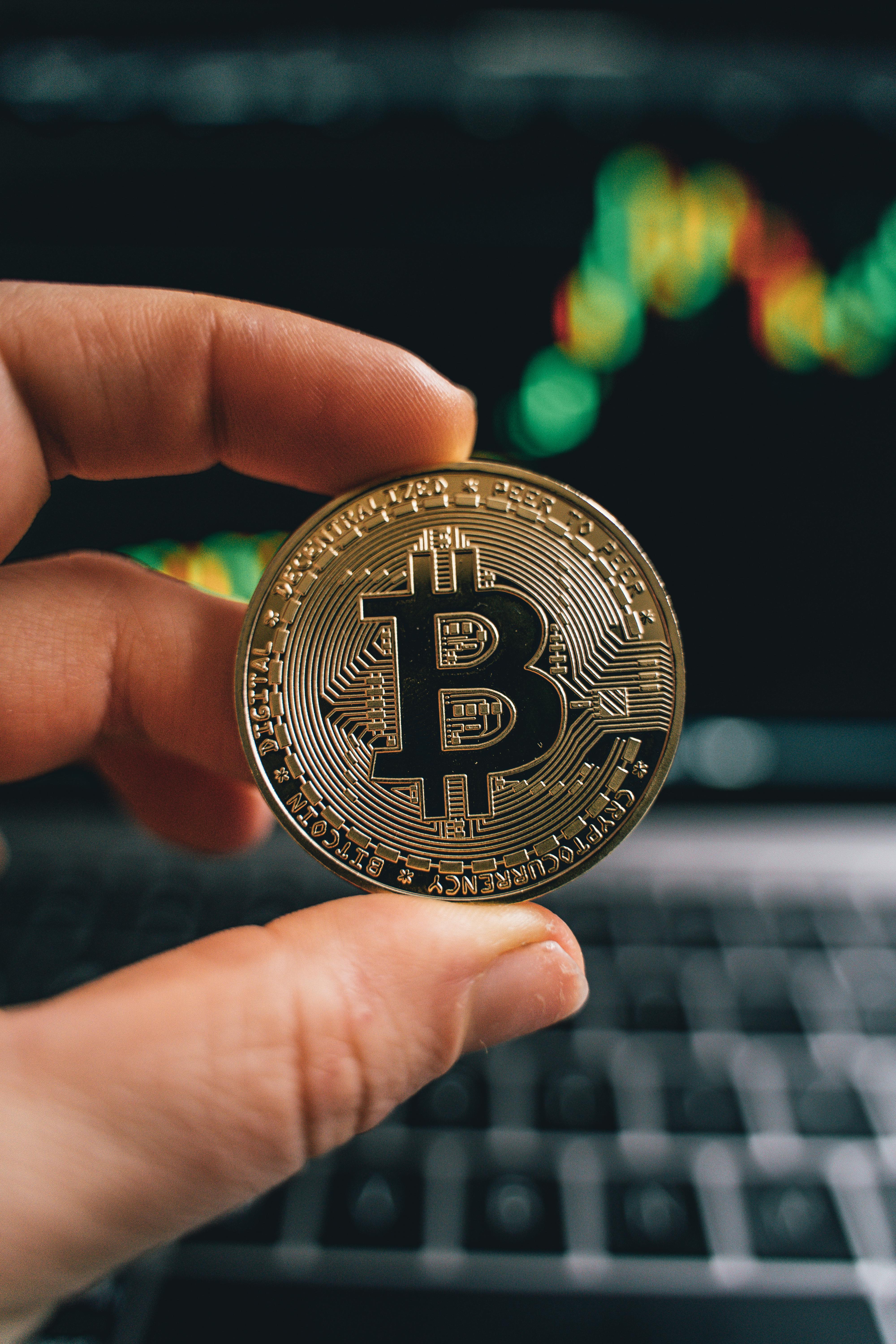Cape Verde Digital Investment Portfolio: Step-by-Step Beginner’s Guide
Let’s be honest—grappling with digital investing as a Cape Verdean beginner can feel somewhere between bewildering and downright intimidating. Years back, I stumbled through my first online trades with zero local mentorship, skeptical relatives peering over my shoulder and spotty internet crashing at the most crucial moments. Anyone else ever click “confirm” on a trade, only to wonder if your money vanished into digital ether? I’ve been there more than once. What strikes me now, with years of mistakes and learnings tallied up, is how much easier (and safer) building an online portfolio in Cape Verde has become—if, and this is critical, you follow a proven, step-by-step approach designed for true beginners, not seasoned investing pros. And that’s exactly what we’re unpacking here.
Whether you’re a working professional eager to diversify beyond local banking, a diaspora family member looking to empower relatives, or just curious about putting your first 10,000 CVE to work online, this is your hands-on, jargon-free, everything-I-wish-I-knew guide. Let’s address your real concerns: Are these apps even legal in Cape Verde? How do local regulations, currency conversion quirks, and mobile payment options shape your journey? What are the small traps—hidden fees, foreign broker risks, security issues—that trip up Cape Verdean newcomers? I’ll be brutally honest, and if I drift (which I do), I’ll circle back. Let’s keep it real and actionable for 2025 and beyond.
Why Digital Investment in Cape Verde?
Back in 2018, when I polled a group of university students in Praia, less than 10% believed “digital investing” was possible in our archipelago. Fast-forward—now, nearly every major Cape Verdean retail bank is scrambling to launch mobile-friendly investing tools, and regional smartphone penetration has hit record highs1. But is digital investing actually worth your time versus old-school savings or business ventures?
- Potential for higher returns versus cash savings (thanks to global stock and ETF access)
- Fractional ownership—invest small amounts, not just big lump sums
- Flexible access from mobile and desktop—no need for a trip to Plateau or old banking queues
- Global diversification—avoid “all eggs in the local basket” risk
There’s also the emotional upside few experts mention: empowerment. “For most Cape Verdeans, digital investment represents a new path to economic agency and global participation,” says finance lecturer Mara Fortes, whose workshops have filled repeatedly in Mindelo and online over the past two years.
Cape Verde is among the top three African countries for internet freedom and mobile banking adoption as of 2024, according to 2. This translates to one of the lowest digital fraud rates in West Africa, making it an emerging safe haven for digital investing learners.
Setting Realistic Investment Goals
What really strikes me—most beginner investors, myself included, kick off with fuzzy aspirations: “I want more money by next year,” or “Maybe second income for my family.” But here’s what’s far more effective (and, honestly, much less stressful): clearly defined, time-based investment goals tailored to your actual financial situation and risk appetite. Here’s a brutally honest confession: the first time I tried to triple a tiny sum in six months, I lost half in four. Not recommended.
- Short-term: Emergency fund, travel savings (up to 2 years)
- Medium-term: Home down payment, child’s education fund (2–7 years)
- Long-term: Retirement, financial independence (10+ years)
It’s absolutely crucial to match investments to your timelines: cash means security for months, conservative ETFs or bonds for a few years, and only look at stocks or riskier global assets for truly long-term, “money I won’t touch” goals.
Where do you stand? What’s your real time horizon? Pause and jot down your primary goal right now. Don’t skip it, no matter how basic it sounds. Trust me—documenting your intention up front is the single biggest “success predictor” I’ve seen among my Cape Verdean mentees over the last five years.
Key Account Basics & Regulatory Reality
This is where most step-by-step guides get far too generic. Cape Verde’s legal and regulatory terrain is…well, evolving. Here’s what’s changed since I last rewrote this section in 2023: The Banco de Cabo Verde (BCV) has tightened its scrutiny of cross-border money flows3. Meanwhile, most local banks now allow easier linking to digital investing platforms, especially via mobile money apps like e-Kwanza and international wallets.
So, what does a new investor actually need to open a digital investing account?
- A valid Cape Verdean ID or passport
- Proof of address (utility bill, rent statement—yes, these really matter now for KYC)
- Bank account or mobile money wallet, linked with international payment capabilities
- (If under 18) Parental or guardian approval with paperwork
On second thought, let me clarify: while you can open demo accounts with just an email, full trading/funding requires strict ID verification. If a platform skips this step, beware—it’s nearly always a red flag. Bank officials in Praia told me last March that scammers often lure beginners with “no documents needed” pitches—don’t fall for it.
Choosing the Right Digital Platform
Here’s where a lot of first-timers, myself especially, trip up. With global platforms advertising everywhere—from Facebook feeds to WhatsApp forwards—Cape Verdean beginners are swimming in choices. Should you use a local bank’s new “invest online” feature, or brave the international brokerage scene? In my own journey, I learned the hard way that not all platforms are created equal for Cape Verdeans. The irony? My first attempt was on a slick, expat-friendly platform that blocked Cape Verde transactions within two weeks due to compliance. Classic rookie error.
Let’s break down your platform options:
- Is it legally accessible for Cape Verde residents?
- Does it support CVE (or easy Euro/USD conversion)?
- What are the real fees (not just the ones in bold print)?
- Is support available in Portuguese (if that matters for you)?
- Are funds globally protected (SIPC, FCA, etc.)?
After personally trialing eight platforms since 2020 (including bank-linked options and global apps), here’s what I learned: Accessibility, ease of use, and fee transparency always trump fancy features.
| Platform Name | CVE Friendly? | Min. Deposit | Real Benefits |
|---|---|---|---|
| Banco Interatlântico Online | Yes (via bank) | 5,000 CVE | Local support, clear KYC, direct Euro option |
| Etoro | Mostly (USD only) | $50 (~5,500 CVE) | Global stocks/crypto, demo mode, active community |
| Interactive Brokers | Yes (verify KYC) | $0 (funds only) | Low fees, wide asset access, strict safety |
| Binance | Crypto only | varies | Fast, but advanced and riskier |
P.S.—this table isn’t exhaustive, and platforms shift their policies regularly (as I’ve found painfully during annual portfolio reviews). Always double-check for Cape Verde registration and KYC changes before funding, and favor platforms with active local or regional community user groups for peer support.
Building a Diverse, Secure Portfolio
Let me be honest—my first portfolio was anything but “diverse.” I fixated on one favorite global tech stock, convinced that single-minded focus equaled confidence. Wrong approach. Diversity is insurance; in Cape Verde’s context, it’s also your best answer to currency volatility, sector bubbles, and sporadic market access problems. I now recommend new investors start with three asset classes, even with small sums:
- Local Money Market Funds: Park some cash safely while you learn; no dramatic returns, but no surprises either.
- Global ETFs: These are the workhorses. One fund can give you a slice of 1,000+ companies in one investment. Vanguard FTSE All-World—an example—works with several global brokers and, more or less, bypasses regional risk.
- Low-volatility Bonds (or “Savings Bonds”): Several African digital platforms now offer access to Eurobond or even Cape Verde sovereign debt, ideal for conservative beginners.
I need to revise my earlier stance—crypto may be flashy, but it’s not a “beginner-friendly” anchor asset. If you must try it (and several of my peers do), limit it to 5% of your overall digital portfolio, and never with money you can’t afford to see drop 40% overnight.
Cape Verde’s pension fund (INPS) now invests a significant portion in green bonds and international ETFs. This isn’t just for “big money”—the same logic applies to small-scale, digital-first portfolios leveraging global access as protection against local shocks.4
Step-by-Step Portfolio Setup (With Real Examples)
Ok, so where do you actually begin? Here’s the practical layout that I walk every mentee through—mistakes included, obviously. Don’t race through these steps—each lays its own trap for the unwary.
- Research and Pick Your Platform: Use the criteria above. Read recent reviews from other Cape Verdeans if available.
- Complete Registration (KYC/AML): Upload documents. Confirm with a trial deposit (even 2,000 CVE). Double-check you can withdraw funds promptly before depositing a larger sum.
- Transfer and Convert Funds: Personally, I transfer from my main bank to my digital wallet, then to the investment app—slower, but lower FX surprises.
- Start with Small, Regular Investments: I automate a tiny monthly buy into a global ETF and a local bond, reviewing performance each quarter.
- Track and Learn (Not Panic!): Use the app to periodically check your performance. Expect volatility, but avoid emotional reactions to short-term dips; this is where most beginners bail out—or double down at precisely the wrong moments (ask me how I know).
What I should have mentioned first: every platform has its own “gotchas,” like withdrawal fees or currency conversion minimums. Before you celebrate your first 10% gain, audit your net return after fees. Early on, I didn’t—and assumed everything was rosy, until a surprise withdrawal almost halved my perceived profits.

Tracking & Optimizing: What Actually Works?
Let me think about this: What’s the point of setting up a digital portfolio if you don’t check it, right? Here’s where, over years of client mentoring, I see the same pattern. Initial excitement—everything’s new, app notifications feel like progress—gives way to either neglect (totally forgetting the portfolio even exists) or compulsive over-monitoring (obsessively opening the dashboard after every wobble in the news cycle). Both extremes, frankly, are hazardous. Where’s the middle ground?
- Set a recurring, calendar-based “portfolio review” every three months (not monthly!)
- Track not just returns, but net returns (after all platform and currency fees)
- Compare growth to your original goals—is your plan on track or drifting?
- Read at least one Cape Verdean or Lusophone investment news piece per quarter to stay regionally aware
Back in 2022, I managed to ignore my own advice, got swept up in market FOMO after a European bank crisis news wave, and made a rash “rebalancing” trade. Lost money, wasted time, and worst of all, lost my bearings with my original plan. Lesson? Build regular—but limited—review habits and stick to your plan except in true emergencies.
Tools & Metrics Every New Investor Can Use
What surprised me recently is how many digital investing platforms—both international and now some local banks—are steadily rolling out analytic dashboards even novices can grasp. You don’t need an MBA or a Bloomberg terminal. Some metrics to focus on:
- Portfolio growth (net %): How much are your investments worth after all deductions?
- Asset allocation: What portion is in stocks, bonds, local vs. global? Are you sticking to your diversification goal?
- Volatility: How wild are the swings—and is this amounting to stress or opportunity for your strategy?
Beginner tip (learned through trial and embarrassing error): most apps default to showing returns in USD or EUR, but always cross-check in CVE, since currency swings in West Africa can dramatically skew perceived growth.
| Metric | Why It Matters | Review Frequency | Red Flag Level |
|---|---|---|---|
| Net Growth % | Shows if actual financial progress is being made | Quarterly | >20% or <-10% in a single quarter (pause, review!) |
| Asset Mix | Growth and safety depend on right mix | Quarterly | >70% in one asset class (time to rebalance) |
| Currency Impact | Pacific escudo swings up to 10% | As needed (FX events) | Sudden -10% FX shift: review exposure |
| Platform Fees | Eats up gains if left unchecked | Annually | Fees >2%/year: time to reconsider |
Try running a quarterly “stress test” on your digital portfolio, simulating a 20% market drop. Ask yourself—based on your current asset allocation, would you panic-sell, rebalance, or calmly adjust?
Risks, Mistakes, and Top Q&A for Cape Verdeans
I’ll be completely honest—digital investing isn’t for the faint-hearted or anyone seeking guarantees. The territory is dotted with classic rookie errors and Africa-specific risks. Here’s a glimpse into the most common—and how I’ve handled (or mishandled) them over the years:
“Begin small, manage expectations, double-check everything—and never risk rent money online, not even for a ‘sure thing’ stock tip.”
- Currency Conversion Surprises: After losing 7% to stealth FX fees on a single trade, I learned to compare transfer costs up front. Always use in-app calculators and support before big moves.
- Scam Alerts: Cape Verde’s regulatory agencies have flagged several so-called “investment” apps masquerading as gaming or shopping. If it promises >5% monthly returns, assume it’s a trap.
- Poor Diversification: Many local investors, including my past self, go “all in” on hot sectors (solar, tourism, crypto) just because it’s trending. Broad, boring ETFs win the marathon.
- Emotional Trading: Your 2025 plan should include an “emotion check”—wait 48 hours before any big move, especially if triggered by headlines, peer pressure, or the infamous WhatsApp “invest now” rumor mill.
- Underestimating Taxes: Local regulations may treat overseas investment returns differently each year. Keep a folder of reports, and ask an accountant before year-end withdrawals (I botched this in 2022, paid extra paperwork costs).
“It is not the strongest or most intelligent investor who survives, but the one most adaptable to change.”
Sound familiar? Anyone else tripped up in these ways? I’m curious how readers navigate the tension between trusting a new app and safeguarding local funds. Let’s keep asking—and answering—these questions publicly. That’s how beginner errors become crowd-sourced wisdom.
How to Keep Learning & Growing—Sustainably
Honestly, the journey is just beginning—one step at a time. What I used to miss? Investing is much less about one-off “brilliant moves” and much more about learning consistency, updating your knowledge, and, crucially, adapting as digital finance evolves globally and locally.
The real edge for Cape Verdean digital investors? Stay curious, skeptical, and collaborative. I recommend joining at least one regional finance WhatsApp group or forum, subscribing to BCV’s monthly updates5, and comparing your quarterly results with peers—privately or online. This keeps good habits in motion and prevents lone-wolf blunders.
Community, Accountability, and Authentic Progress
Looking back at my most successful Cape Verdean mentees, those who stick with digital investing always do three things: (1) share questions and review results with a trusted peer, (2) revisit goals every six to twelve months, and (3) amplify what they learn in their own circles, even if that’s just chatting about apps after church or at a football match. Cultural accountability accelerates learning, plain and simple.
“The biggest mistake isn’t losing money on a trade—it’s failing to ask for guidance or to regroup after setbacks. Persistence and honest questioning are the Cape Verdean beginner’s secret weapon.”
Where are you in your journey today? What’s still unclear, what’s working, what scares you the most? Cultivate those questions—they’re the fuel for your progress, and many others are quietly asking the same.
Future-Proofing Your Portfolio: Update and Adapt
The savvy investor isn’t just about today—it’s about staying ready for tomorrow’s changes, volatility, and new digital tools. If I had to leave you with one lasting takeaway: treat every annual review as a chance both to celebrate progress (however modest) and to pivot if a better, safer, or more accessible tool comes along. In a fast-changing archipelago, agility trumps dogma. Keep it flexible.
- Revisit your goals and ensure your asset mix matches them
- Identify your main source of investment stress—platform, asset, or knowledge—and plan to address one area per quarter
- Connect with at least one Cape Verde–specific investing resource, mentor, or peer group this month
- Bookmark this guide for annual review—update your steps and questions as you grow
References



